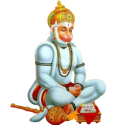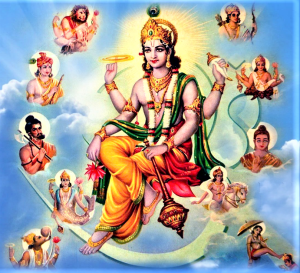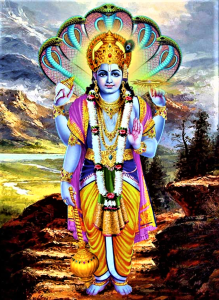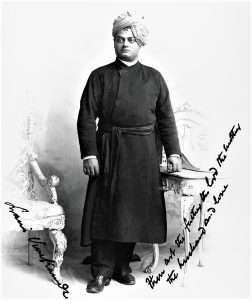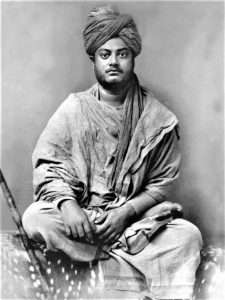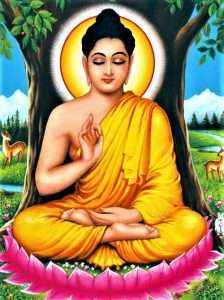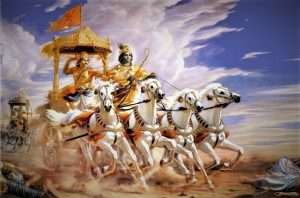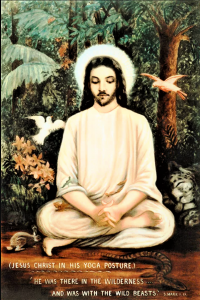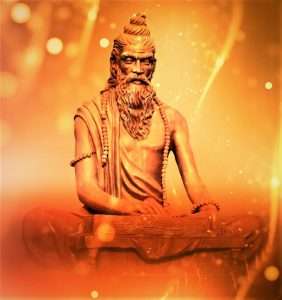Bhakti Yoga
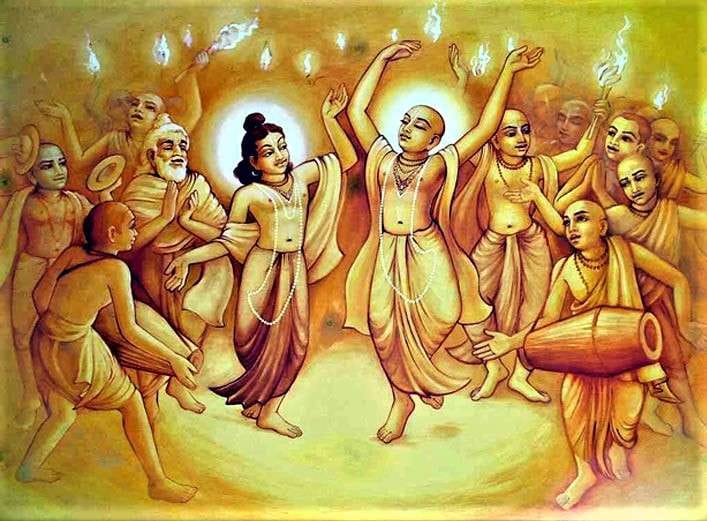
The Sanskrit word Bhakti comes from the root ‘bhaj’, which means attached, devoted to something spiritual, religious or God. Bhakti is intense love for God without any selfish expectation. Therefore, it is also called ‘Prem’. A devotee of God imagines and believes that his God is an ocean of love and he feels oneness with his God. According to Sage Shandilya, Bhakti is intense love to God. Saga Narada describes it as the form of supreme love towards God. According to Swami Vivekananda, the best definition is given by the king of Bhaktas, Prahlada: “That deathless love which the ignorant have for the fleeting objects of the senses – as I keep meditating on You – may not that love slip away from my heart!”
Bhakti Yoga – Bhakti Yoga is the path of intense love to a personal God in which a devotee believes. It is spontaneous out-pouring of love towards the loved. Here the love is pure, unselfish, ever-growing and divine. Bhakti Yoga is one of the most powerful branches of Yoga. According to great saints, Bhakti Yoga is the easiest and the highest form of Yoga as it is very easy to practice, open to everyone and grants all the merits of Yoga by the grace of God. The personal God may vary from one devotee to another which includes Gods and Goddesses as well. In Hinduism we have such personal forms of Gods and Goddesses like Rama, Krishna, Vishnu, Shiva, Sita, Radha, Laxmi, Parvati, Durga, Kali, Ganesha, Tara and so on.
Types of Bhakti – Bhakti has been classified in different ways. They are –
- Sakam Bhakti – It is devotion to God with desire for material gains.
- Niskam Bhakti – It is devotion to God without any desire but to have vision of Him and His association.
- Apara-Bhakti – In this level, a devotee of God regards his God as supreme, observes rituals and ceremonies and considers his form of worship as the right way.
- Para-Bhakti – From Apara-Bhakti, the devotee enters into Para-Bhakti which is the highest form of Bhakti. He sees God everywhere and feels His Power manifest everywhere. He becomes free from all distinctions as he sees God in all beings.
Types of Bhakta (Devotees) – Chapter 7 of Bhagavad Gita mentions four types of devotees. God Krishna says to Arjuna that four types of people become devoted to Him. They are all undoubtedly magnanimous souls. They are Arta, Jijnasu, Artharthi and Jnani.
- Arta – It symbolises a distressed devotee who suffers and craves for the grace of God to be relieved from pain and sorrow.
- Jijnasu – It symbolises a devotee who seeks after knowledge and wisdom by the grace of God.
- Artharthi – It symbolises a devotee who seeks after wealth and worldly possessions by the grace of God.
- Jnani – It symbolises a devotee who has no desires and who considers his own Self as the All-inclusive God.
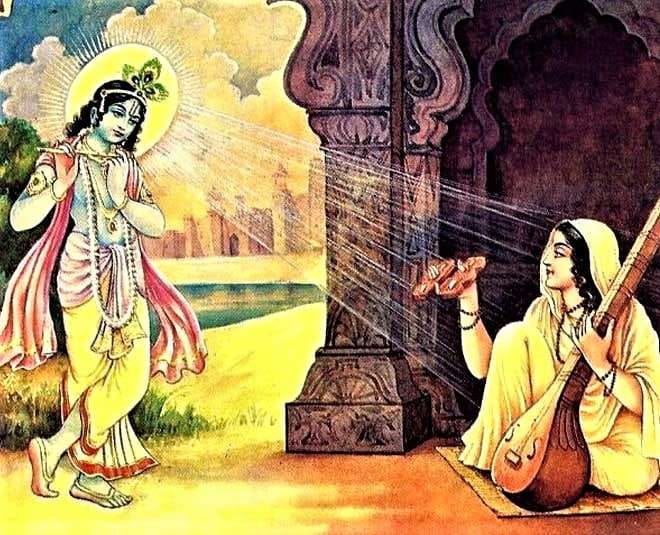
Bhavas in Bhakti –The Sanskrit word Bhava means feelings. According to the great saint Ramakrishna Paramhamsa, Bhava means true relationship between a devotee and God. When a devotee grows in Bhakti (devotion), he experiences self-forgetfulness which is called Bhava. Bhakti develops into Bhava. Bhava grows into Mahabhava (the devotee lives in God) and Mahabhava into Prem (absolute oneness with supreme Love of God). This is the gradual unfolding and development of intense love from Bhakti to Prem. The Bhava or feelings are very important parts of Bhakti Yoga. They are natural parts of us as well. Therefore, they are easy to practice. In order to practice Bhakti Yoga, a devotee needs to establish a true relationship with his God such as mother, father, Guru, friend, beloved, lover, master, son, daughter, enemy and so on. He may practice a particular Bhava which suits his temperament and grows in the path of divine love. This is how in Bhakti Yoga, a devotee develops his spiritual awareness to attain the ultimate goal of human life. In the history of humanity, there are examples of so many devotees of God who developed his devotion to God and spread the love to God as a very potent means for higher evolution. In the scriptures of Bhakti Yoga, some bhavas have been explained. Those bhavas are –
- Shanta – It is a very neutral feeling in which a devotee stays peaceful. He does not exhibit much emotions yet his heart is full of intense devotion. The monks usually keep Shanta Bhava. The great brahmachari Bhishma was a Shanta Bhakta.
- Dasya – In Dasya Bhava, a devotee thinks that he is a servant to his master. The great God Sri Hanuman was a Dasya Bhakta.
- Sakhya – In Sakhya Bhava, a devotee thinks God as his friend. The great warrior Arjuna was Sakhya Bhakta.
- Vatsalya – In Vatsalya Bhava, a devotee thinks God as his child. The great mother Yasoda was a Vatsalya Bhakta.
- Madhurya or Kanta – In Madhurya Bhava, a Bhakta establishes the idea of a lover and a beloved. He regards himself as wife of God. This was the relation between Goddess Radha and God Krishna. The Sufis, devotees of Brindavan and Mathura are devotees with Madhurya Bhava. The devotees in Vrindavan dress like women, behave and speak like them to entertain the idea of a lover and a beloved. Chaitanya Mahaprabhu, Jayadeva and Mira had Madhurya Bhava.
- Sakhi – In Sakhi Bhava, a devotee thinks that he is Sakhi (fellowmate) of a Goddess. Lalita and Vishakha had Sakhi Bhava.
- Vaira – In Vaira Bhava, a devotee develops enmity to God. It is a negative relationship. They are negative Bhaktas. They hate God and through intense hatred remember God always. Therefore, they are also a kind of Bhaktas only. God grants them liberation through Vaira-Bhakti as they constantly remember God. Demons like Ravana, Kamsa, Sishupala and so on thought of God constantly because of their deep hatred to God thus they attained salvation.
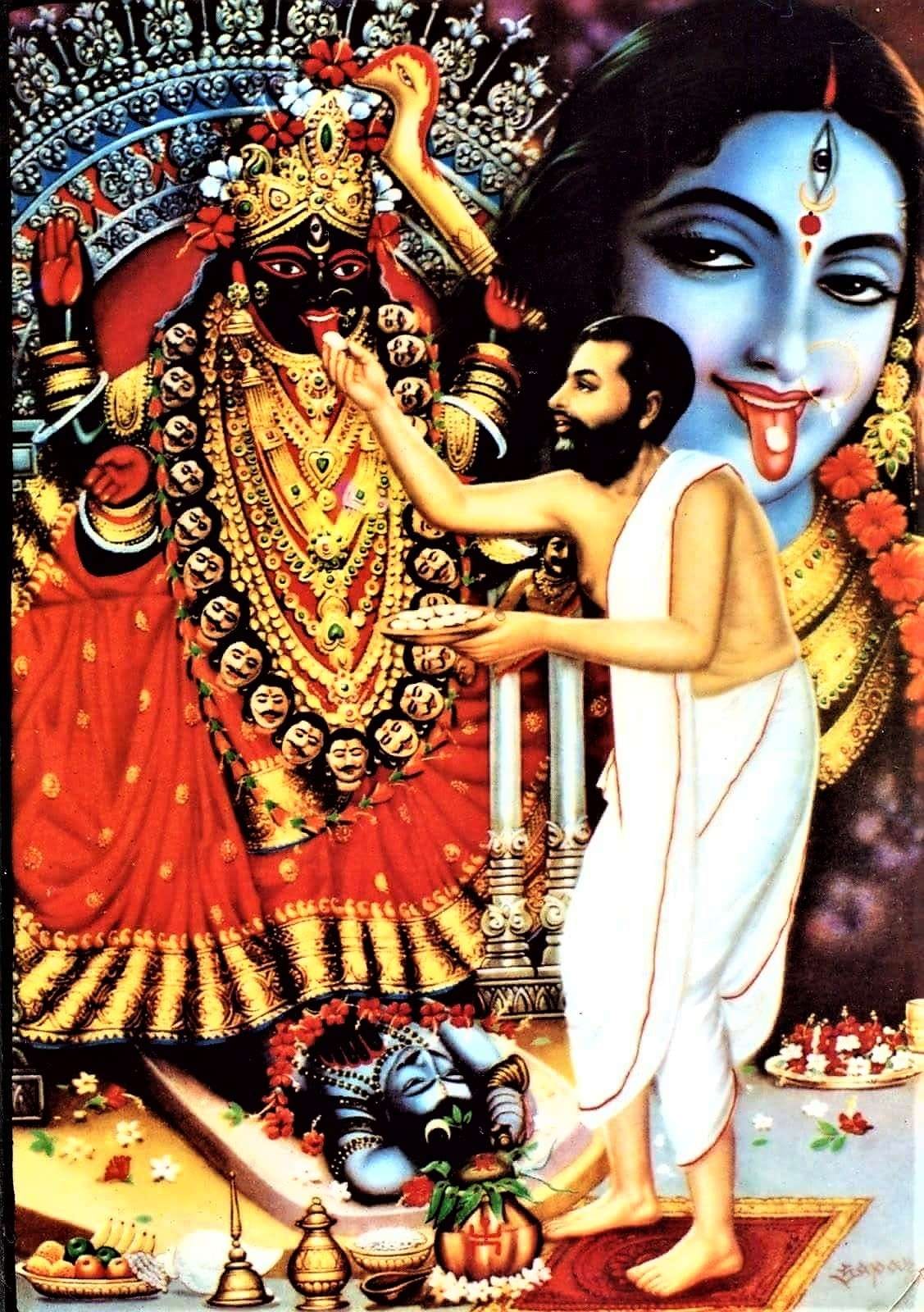
How to cultivate Bhakti – Bhakti is not mere a sentimentalism. It is actually a thorough discipline and appropriate training. It is a sure means to the realization of God through intense love. Beginning from an ordinary idol worship right up to cosmic oneness with God has been a very true happening in the lives of many people. Saint Ramanuja prescribes eleven fundamental factors to achieve Bhakti. They are –
- Abhyasa (Practice) – Continuous thinking of God
- Viveka (Discrimination) – Careful selection between right and wrong, what should be done and what should not be done.
- Vimoka (Longing for God) – Vimoka is longing for God alone, renouncing everything else. To want nothing is the greatest and most efficacious way to attain longing for God.
- Satyam (Truthfulness) – Truthfulness is of prime importance. God is Truth and to realise Him one must speak the truth alone.
- Arjavam (Straightforwardness or Honesty) – One must cultivate a heart like that of a child and maintain honesty. There is no place for falsehood in the quest for God.
- Kriya (Doing good to others) – One must do good to others and serve others irrespective of any distinction. As a true devotee, we should behold God in all and serve as much as possible.
- Kalyana (Wishing well-being to all) – One should pray to God for the well-being of others. First, we should pray for others and then for our own salvation. This is true spirit of a devotee.
- Daya (Compassion) – One should cultivate a broader heart. God is all-merciful and as we seek to realise Him, we must become an ocean of mercy and love.
- Ahimsa (Non-injury) – Ahimsa is the origin of all divine virtues. It is a life-giving force. Practice of Ahimsa generates the feeling of cosmic love.
- Dana (Charity) – Spontaneous giving away of essentials with a pure heart to help and dilute the sufferings of others, elevate the heart and destroys its impurities. This is the law of nature – the more we give, the more will come to us.
- Anavasada (Cheerfulness and hope) – One should proceed in Bhakti with cheerfulness. Ultimately the success comes sure. This is an essential virtue for a devotee. One must be optimistic and persevering. There are many things which pull someone down but he must not lose hope and proceed on the path of spiritual discipline.
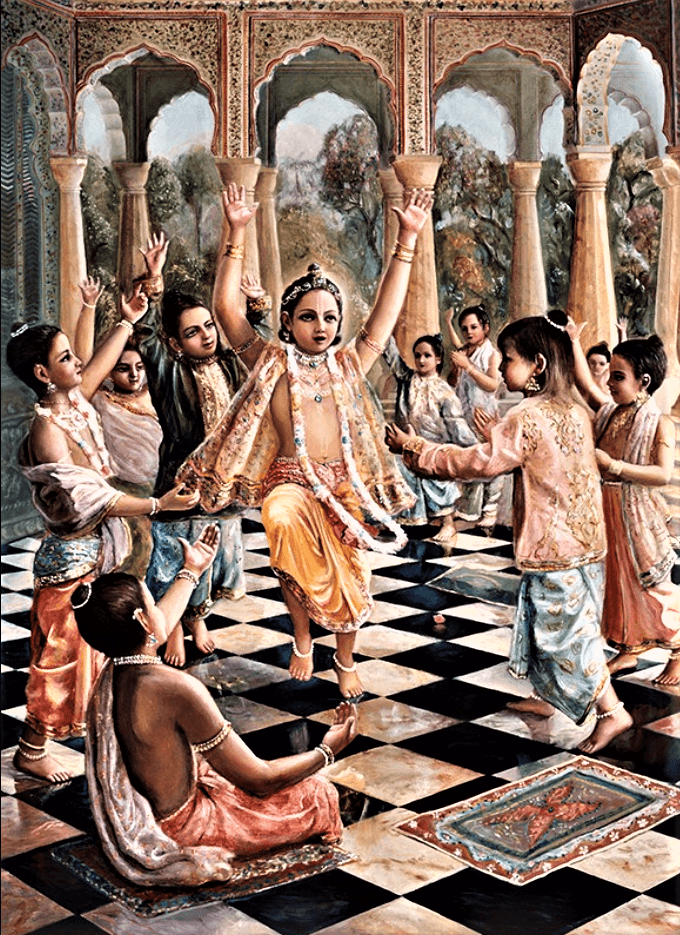
Ancient nine-fold path of Bhakti Yoga – The nine-fold path of devotion is Navadha Bhakti or Nava-Vidha-Bhakti. This is also called nine limbs of Bhakti Yoga. It has been explained in Srimad Bhagavatam (7.5.23) and Vishnu Purana. A devotee may practice any of them which suits him the best and through that he will sure attain illumination. They are –
- Shravana (Listening to God’s stories) – This is hearing of God’s divine sports, virtues, glories and stories. The devotee hears them with a sincere heart and becomes absorbed. One can attain Sravana-Bhakti in the company of saints and devotees.
- Kirtana (Singing God’s glories, prayers and names) – This is singing God’s glories, prayers and holy names. A devotee sings and dances with divine feelings. He makes others also dance in company.
- Smarana (Remembrance of God) – This is remembrance of God and unbroken memory of the names and form of God. During Smarana, the mind meditates on what is heard about God.
- Padasevana (Service of God’s feet) – This is serving God’s feet. It is possible to practice with the image of God in idols.
- Archana (Worship of God) – This is worship of God. It can be done either through an image, a picture or even mentally. Worship is done with external materials like flowers, incenses, camphor and so on or mentally through strong internal feelings.
- Vandana (Prostration to God) – This is humble prostration to God by being on the ground with the eight limbs of body (Sashtanga-Namaskara). It is done with strong faith, reverence and egolessness before a form of God.
- Dasya (Feeling of a loyal servant to God) – This is expression of love for God as a very loyal servant to serve Him and carry out His wishes. A devotee looking after a God’s statue in a temple is in Dasya feeling.
- Sakhya (Cultivation of friendship) – This is the cultivation of friendly relation with God. In this feeling a devotee always tries to be with God, treats Him as own relative or friend and family.
- Atma-Nivedana (Complete surrender of oneself) – This is complete surrender and offering to God, including body, mind and soul. A devotee becomes a part of God and acts as an instrument in the hands of God. This is the highest state and the culmination of divine love.
The nine-fold modes of Bhakti are the most ancient ways through which a devotee experiences the divine love of God. A devotee may practice any of these paths to reach the highest state.
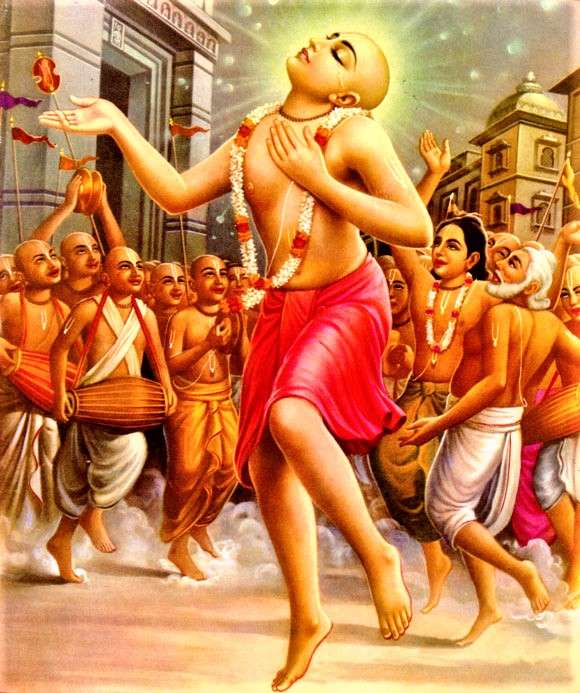
Signs of Pure Bhakti – In the scriptures of Yoga, signs of pure Bhakti have been given. These signs develop when pure bhakti develops in a devotee. In Srimad Bhagavad (11.14.24), God Krishna says to Uddhava: “A devotee whose voice is choked up, whose heart melts and pacifies, who cries sometimes and sometimes laughs, who feels ashamed, sings aloud without shame and dances – he thus absorbed in My Bhakti purifies the entire universe.” There are eight important signs of Bhakti. They are –
- Ashrupaata (Profuse tears)
- Pulaka (Horripilation or hairs standing on their end)
- Kampana (Tremors in body)
- Rodana (Wild cry or weeping)
- Haasya (Mad laughter)
- Sveda (Perspiration or sweating)
- Murchha (Fainting)
- Svarabhanga (Inability to speak or stammering sound).
These external symptoms are signs that a devotee is excelling in his divine love. In the life of many great devotees these physical symptoms developed. Goddess Radha had developed all these symptoms in divine love with God Krishna. Prahalad, Chaitanya Mahaprabhu, Meera Bai, Narsi Mehta, Namdev, Tulsidas, Surdas, Maa Sharada, Ramakrishna Paramhamsa, Anandamayi Ma, Neem Karoli Bara, Swami Sivananda and so on are some examples of great devotees who in their lifetime reflected those symptoms. They were the loved children of God and in their hearts God always lived.
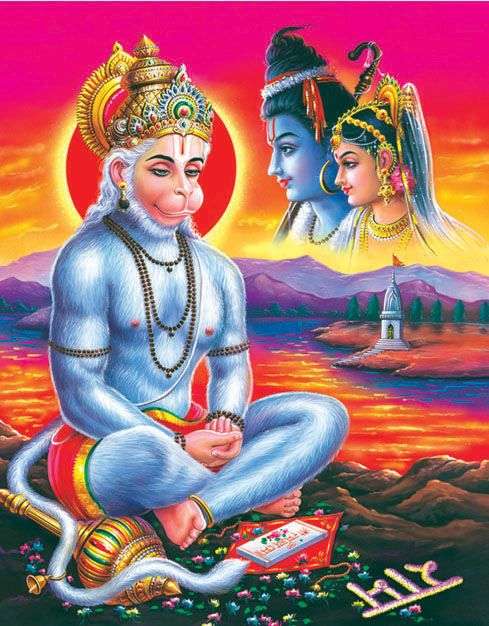
Bhakti Yoga for non-believers (atheists) in God – It seems unusual as to how a non-believer of God may follow the path of Bhakti Yoga and attain the highest state of love. But this is possible. A non-believer in God should practice love and kindness to all beings around him. Right conduct of life, adherence to moral laws, cultivating virtues, expressing compassion, maintaining humanity, being environment-conscious, treating everything; even a blade of grass with due respect, having soft sentiments to the feelings of others and so on are different ways through which also one can reach to the dimension of divine love. Serving the needy and sufferers of world is service of God. These noble qualities do lead to Godliness.
Conclusion – The path of Bhakti Yoga is the easiest of all. It is in harmony with human nature. Bhakti includes all beings and connects all into one thread of love. Bhakti softens heart and infuses joy, peace and wisdom. Bhakti is a sure way to God. Bhakti Yoga is the prescribed form of Yoga in Kaliyuga. All scriptures of Yoga proclaim broadly that in this age of Kaliyuga, Bhakti Yoga is the only way of God-realization. Kirtan (aloud chanting of holy names of God alone or in group) is the most famous practice of Bhakti Yoga. Swami Sivananda writes, “Bhakti softens the heart and removes jealousy, hatred, lust, anger, egoism, pride, and arrogance. It infuses joy, divine ecstasy, bliss, peace and knowledge. All cares, worries, anxieties, fears, mental torments and tribulations entirely vanish. The devotee is freed from the wheel of births and deaths. He attains the immortal abode of everlasting peace, bliss and knowledge”.
With Love and Gratefulness (Founder Rohit Kumar)
Source – Ancient texts of Yoga, words of Swami Vivekananda, Swami Sivananda and personal study.
Hari Om Tat Sat!

